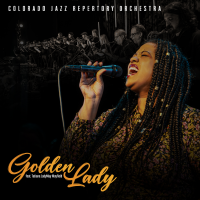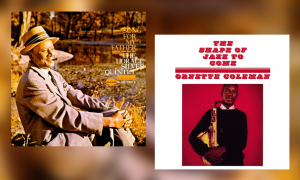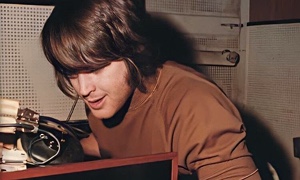Home » Jazz Articles » Building a Jazz Library » Charles Mingus: An Essential Top Ten Albums
Charles Mingus: An Essential Top Ten Albums

I am Charles Mingus, half black man, not even white enough to pass for nothing but black. I am Charles Mingus, a famed jazzman, but not famed enough to make a living in this society.
Mingus packed such an incendiary mixture of blistering and lyrical music into his career years 1945 to 1979 as to make many other musicians seem practically comatose. As a composer his peers included Duke Ellington, whose work he deeply admired, and unlike Ellington, Mingus had no Billy Strayhorn beside him. His music was gloriously, defiantly, completely his own, wrought unaided out of his (not so) private hell, a one-off mix of Ellington, Charlie Parker, gospel, the blues, New Orleans polyphony and fast small-band swing music.
Mingus excelled at composing for both small and mid-sized ensembles, and like Ellington, he wrote and arranged with specific soloists in mind. He micro-managed the performance of his music in the recording studio and on the bandstand, unafraid to halt a piece midway and publicly berate a musician for failing to adhere to its spirit. He famously punched the trombonist Jimmy Knepper in the mouth for one such infraction, severely damaging his embrochure and necessitating his temporary retirement. Knepper sued, but he returned to the lineup years later. Also famously, at Mingus' urging the tenor saxophonist Dannie Richmond switched to drums to join Mingus in 1957 and remained Mingus' drummer until the very end.
The best way to understand Mingus is to listen to his music, although much has been written by and about him. He wrote a lengthy and compelling autobiography, Beneath The Underdog: His World As Composed By Mingus (Alfred A. Knopf, 1971), in which he variously portrayed himself as a genius, a victim, a fighter, a moralist and a pimp, among other things. But the book raises as many questions as it provides answers, as do his biographies. Even Geoff Dyer, in his inspired collection of vignettes, But Beautiful (Jonathan Cape, 1991), possibly the greatest book ever written about jazz, in which Dyer seeks to inhabit the minds of eight icons including Mingus, Bud Powell, Lester Young and Chet Baker, and mostly does so with apparent authenticity, is least successful when it comes to Mingus. The pen portrait written at Mingus' request by his psychiatrist, Edmund Pollock, for the sleeve notes for The Black Saint And The Sinner Lady (Impulse, 1963), is also inadequate for the task, although Pollock includes some telling observations, such as "[Mingus] feels intensively. He tries to tell people he is in great pain and anguish because he loves... he wants to love and be loved."
The ten albums which are listed below are by no means a definitive Mingus Top Ten, nor are they intended to be. But they are, indisputably, ten albums which deserve a place in any serious jazz library.
CHARLES MINGUS: AN ESSENTIAL TOP TEN ALBUMS
Unless noted otherwise, these albums are listed in the order they were recorded, not the order in which they were released. Pithecanthropus Erectus
Pithecanthropus ErectusAtlantic, 1956
Mingus' first blinder, the first of many. The band is completed by alto saxophonist Jackie McLean, tenor saxophonist J.R. Monterose, pianist Mal Waldron and drummer Willie Jones—Mingus' longtime drummer, Dannie Richmond, would not come aboard until 1957. There are four tracks: three originals (including the long-form "Pithecanthropus Erectus" and "Love Chant") and one cover (George Gershwin's "A Foggy Day"). Gershwin's standard is reimagined with the addition of field recordings Mingus made in San Francisco's Bay Area of a ship's foghorn, the rumble of a truck, the clang of a cable car, a car horn, a cop's whistle, a wandering drunk and more. Together these give the track something of the character of Moondog's 1953 album On The Streets Of New York (Mars), in particular the track "Fog On The Hudson." History does not record whether Mingus was a Moondog fan, but his on-off friend Charlie Parker certainly was, so it is possible.
 Tijuana Moods
Tijuana MoodsRCA, 1962
Recorded 1957
History also does not record why this album, which vividly evokes the titular anything-goes border town without ever being touristic or literalist, sat on the shelf for five years awaiting release. When it finally came out, Mingus declared "This is the best record I ever made." Dannie Richmond has replaced Willie Jones and it is all change for the rest of the band, too. Jimmy Knepper is on trombone, Shafi Hadi on alto saxophone, Clarence Shaw on trumpet, Bill Triglia on piano, Frankie Dunlop on percussion and Ysabel Morel on castanets. The five tracks include the long-form Mingus originals "Ysabel's Table Dance" and "Los Mariachis (The Street Musicians)," and the cover is Ted Grouya's jazz standard "Flamingo," which like "A Foggy Day" on Pithecanthropus Erectus is substantially reimagined. Mingus' tempo shifts and mini-suite structures within individual compositions, signatures he shared with, and which may have been inspired by Duke Ellington, are now in full bloom.
 Mingus Ah Um
Mingus Ah UmColumbia, 1959
Masterpiece number three. A nine-track collection of mostly short-form pieces, Mingus Ah Um was conceived by Mingus as a celebration of the African American musical tradition. Among the musicians and genres evoked are Ellington ("Open Letter To Duke"), Jelly Roll Morton ("Jelly Roll") and gospel (the long-form "Better Get It In Your Soul," later sometimes given as "Better Get Hit In Your Soul"). Another long-form track is "Fables Of Faubus." Its title references the racist Arkansas governor Orval Faubus and Mingus sometimes performed it with lyrics. Saxophonists John Handy and Booker Ervin and trombonist Willie Dennis join Shafi Hadi and Jimmy Knepper in the horn section, and pianist Horace Parlan replaces Bill Triglia.
 Blues & Roots
Blues & RootsAtlantic, 1960
Recorded with much the same lineup as Mingus Ah Um, augmented by baritone saxophonist Pepper Adams, Blues & Roots explores similar source material. Gospel is celebrated on the passionate and uplifting "Wednesday Night Prayer Meeting" and Jelly Roll Morton ditto on "My Jelly Roll Soul." As with Mingus Ah Um, there are no covers, which by the start of the 1960s Mingus was including more often in live performance than on disc. Perhaps not quite as stellar as its companion album, Blues & Roots is nonetheless rendered essential by "Wednesday Night Prayer Meeting."
 Charles Mingus Presents Charles Mingus
Charles Mingus Presents Charles MingusCandid, 1961
Another stone masterpiece, on Charles Mingus Presents Charles Mingus, Mingus leads a quartet on four long-form originals. The horn players are alto saxophonist and bass clarinetist Eric Dolphy and trumpeter Ted Curson. Dolphy was at the time hugely controversial, having outraged the critical establishment as a member of John Coltrane's band. In a contemporary Blindfold Test, Miles Davis said "That has to be Dolphy. Only he could sound so ugly." But Mingus, like Coltrane, was smitten and when Dolphy left the band to go solo Mingus was devastated. The rapport between the two was never better displayed than it was here on Dolphy's vocalized "conversation" with Mingus on "What Love." "Original Faubus Fables" revisits Mingus Ah Um's "Fables Of Faubus," this time with the addition of call and response vocals by Mingus and Dannie Richmond. "Folk Forms No. 1" bears witness to Mingus' belief that jazz was folk music by another name. The modal, mostly out of time "All The Things You Could Be If Sigmund Freud's Wife Was Your Mother," very loosely based on the boppers' go-to Jerome Kern standard, "All The Things You Are," goes back to the early 1940s. Mingus' was engaged with psychoanalysis all his adult life, either in an analyst-patient relationship or as self-help.
 Oh Yeah
Oh YeahAtlantic, 1962
On Oh Yeah, Mingus handed over the bass to Doug Watkins, instead playing piano and, on three tracks, rapping or chanting. The sextet also includes Booker Ervin, Jimmy Knepper, Dannie Richmond and, making landmark contributions to "Wham Bam Thank You Ma'am" and the deep blues "Ecclusiastics," Rahsaan Roland Kirk on flute, siren, tenor saxophone, manzello and stritch. Few bandleaders were prepared to take on Kirk's larger-than-life presence, fearing perhaps that they would be edged out of the limelight, but no-one could eclipse Mingus and Mingus knew it. Other standout tracks are "Hog Callin' Blues" and "Oh Lord Don't Let Them Drop That Atomic Bomb On Me." Opinion was divided over the vocals, but Mingus' proto-rap on "Passions Of A Man" is gripping stuff. "People say," Mingus observed, "that I'm hollering. Man, I feel like hollering."
 The Black Saint And The Sinner Lady
The Black Saint And The Sinner LadyImpulse, 1963
The liner note for The Black Saint And The Sinner Lady was written by Mingus' psychiatrist, Edmund Pollock. Initially reluctant when Mingus made the request, doubting his ability to write usefully about music, Pollock sensibly focused on Mingus himself. Performed by an eleven-piece ensemble in which the searing contributions of alto saxophonist Charlie Mariano are key to the performance, the thirty-eight minute suite was Mingus' most ambitious long-form composition to date and a stonking success. His second Impulse album, Mingus Mingus Mingus Mingus Mingus (1964), made with much the same lineup, is less compositionally adventurous (and includes some retitled earlier pieces) but is otherwise just as good, with Eric Dolphy replacing Mariano on most tracks.
 Changes One
Changes OneAtlantic, 1975
Mingus released little newly recorded studio work between the Impulse albums and the mid 1970s, and the next major milestones are the Atlantic albums Changes One and Changes Two, recorded at the same sessions in late December 1974. The band is a corker, absolutely as good as any Mingus put together in the late 1950s and 1960s, but often overlooked because of a mistaken perception that he was past his peak by the mid 1970s. The lineup is Mingus and Dannie Richmond, trumpeter Jack Walrath and the killer combination of pianist Don Pullen and tenor saxophonist George Adams, who would go on to form their own co-led group from 1979 to 1989, often propelled by Richmond. Adams' background in R&B made him the ideal testifying tenor player for Mingus and his ability, which was mirrored by Pullen, to play simultaneously "inside" and "outside" gave a special flavour to the music. One is the better of the two albums by a whisker, with four outstanding long-form tracks: "Remember Rockefeller At Attica," "Sue's Changes," "Devil Blues" and "Duke Ellington's Sound Of Love."
 @ Bremen 1964 & 1975
@ Bremen 1964 & 1975Sunnyside, 2020
Recorded 1964 and 1975
This 4 x CD set, originally recorded by West German radio for broadcasts in 1964 and 1975 and made available on disc for the first time in 2020, makes a strong claim to be Mingus' best live album. The performances are more abandoned and intense than on either Mingus At Antibes (Atlantic, 1960) or Town Hall Concert (Jazz Workshop, 1964) or Live At Carnegie Hall (Atlantic, 1974), great though all three of those recordings are. Discs one and two, recorded in April 1964, were made by a sextet including Eric Dolphy, tenor saxophonist Clifford Jordan and pianist Jaki Byard. Discs three and four, recorded in July 1975, were made by the Changes One and Two band and feature the material from both those albums, brought to fresh heights by a lineup with another six months of playing together under its collective belt. Over four hours of music and sheer heaven from start to finish.
 Three Or Four Shades Of Blues
Three Or Four Shades Of BluesAtlantic, 1977
This Top Ten started out with a masterpiece followed by an album which Mingus himself regarded as one of his best and then listed seven more undisputed winners. This tenth and final disc Mingus pretty much disowned on its release. Three Or Four Shades Of Blues was an unapologetic attempt by Atlantic to broaden Mingus' following to include the FM rock audience: the lineup includes three guitarists with jazz-rock sensibilities (Philip Catherine, Larry Coryell and John Scofield), and side one opens with remakes of the signature pieces "Goodbye Porkpie Hat" and "Better Get Hit In Your Soul." It is possible that Mingus' objectivity may have been affected by the onset of his final illness (he would pass less than two years later). Even had he lived longer, however, Mingus was possessed of a degree of artistic integrity which would never have allowed him to go down a crassly commercial path, however hard he might have been pressed do so by a record company. In any event, while noting Mingus' opinion, to objective ears, decades later, the album is a keeper.
Tags
PREVIOUS / NEXT
Support All About Jazz
 All About Jazz has been a pillar of jazz since 1995, championing it as an art form and, more importantly, supporting the musicians who make it. Our enduring commitment has made "AAJ" one of the most culturally important websites of its kind, read by hundreds of thousands of fans, musicians and industry figures every month.
All About Jazz has been a pillar of jazz since 1995, championing it as an art form and, more importantly, supporting the musicians who make it. Our enduring commitment has made "AAJ" one of the most culturally important websites of its kind, read by hundreds of thousands of fans, musicians and industry figures every month.

























